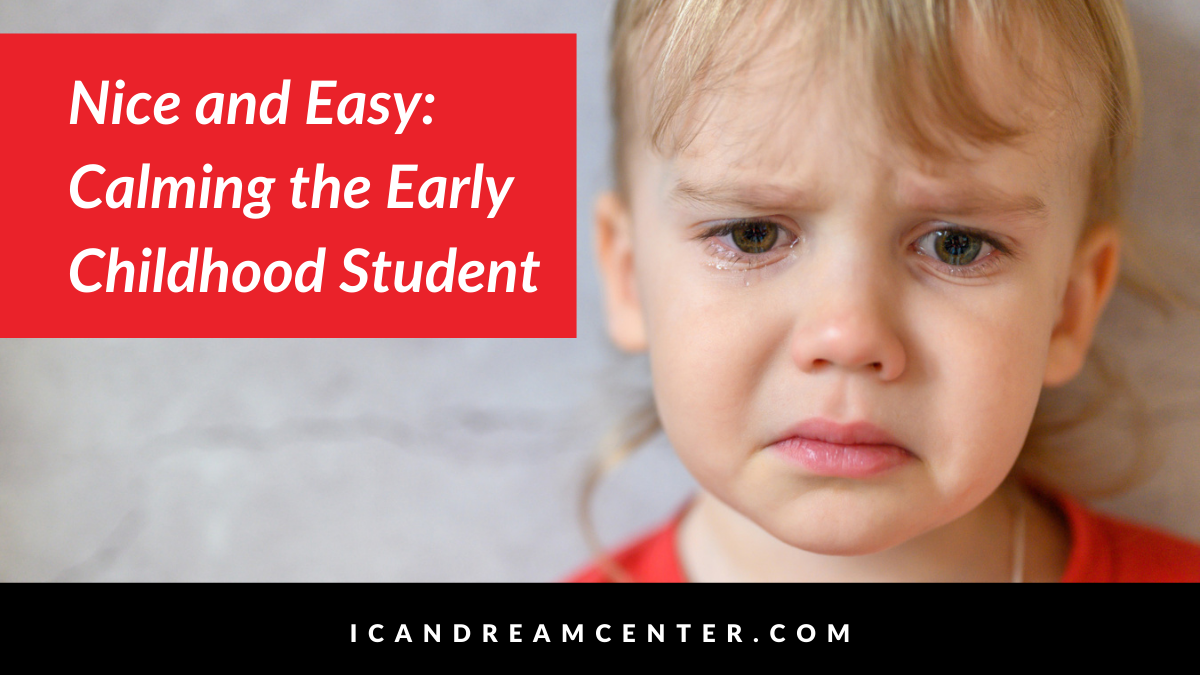
Nice and Easy: Calming the Early Childhood Student
Some of the things that make working with neurodiverse learners in Early Childhood so rewarding are the same things that feel both difficult and rewarding for some social workers.
For me, specifically dealing with an outburst where a student may scream or cry is a behavior all new social workers or teachers learn on the job. In moments when students are in a micro crisis, I often rely on calming the child down with a conversation as I try to identify their distress and how we could work toward relieving their worry.
For some students, it may be as simple as sitting down one-on-one and looking them in the eye to help them calm down and process their emotions. This is not a universal truth, and as I have learned, at times, verbal communication just does not work. Instead, remaining calm and waiting for the student to calm down, as I remain silent, has worked even more efficiently.
Students who are not verbally communicative can usually process their distress and needs with pictures or visuals. Having a chart of pictures on hand with many of the needs a student may have at a time has become a useful tool in those moments of distress. Life is hard enough and after working hard with students, what they are often trying to communicate with instructors is the need for a break. Either verbally asking or presenting a visual works wonders as a motivator to get back to class, have fun, and have a cool-down before returning to learning.
Here are several more ideas for helping students process difficult feelings in the moment:
- Help students find the right words to express what they need.
- Provide simple concrete examples, and how it affects them.
- Say you do not know.
- Return to class routine (Post crisis)
Themes such as patience and willingness to listen are critical skills needed in learning how to deal with a crisis. Meeting a student where they are in terms of communication and demonstrating empathy and flexibility is part of showing respect to the student in need. As a side effect, returning to learning occurs more quickly. Overall, I have learned a lot from how I process my own emotions. Learning that not everyone communicates verbally has helped me further my skills as a social worker in helping a student process their crisis. I hope you might find some of these tips useful!
